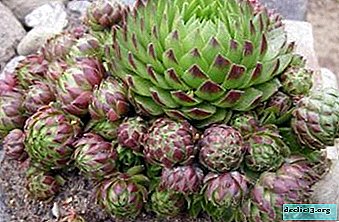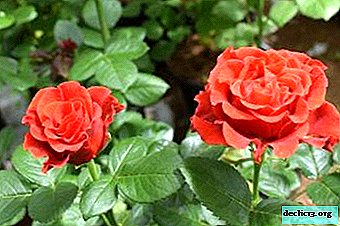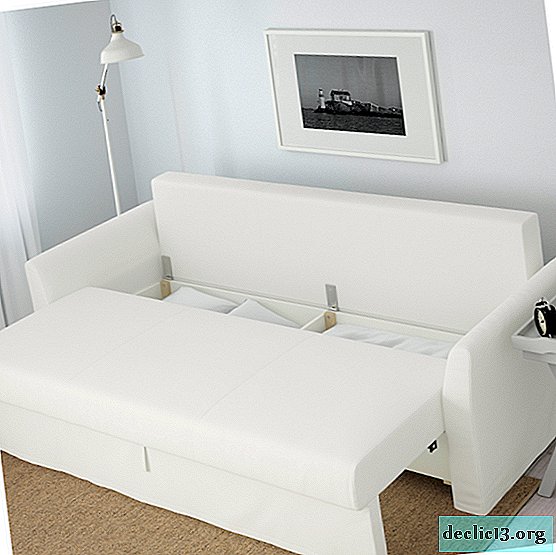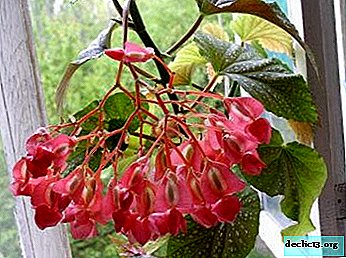Description and photos of varieties of young, especially planting in open ground and caring for the plant

A stone rose or a young tree is a beautiful and unpretentious succulent. Leaving will not cause trouble both at home and on the open ground.
Due to the ability to adapt to any conditions and a beautiful, minimalistic appearance, this plant has gained popularity among many summer residents, gardeners and landscape designers.
Breeders count more than 4,000 species of stone roses. read about this amazing succulent.
Suitable varieties and their photos
Of the variety of varieties, about fifty are suitable for open ground in the regions of Russia. But they are more than enough to satisfy the imagination of the most sophisticated landscape designer. Consider the most popular varieties of young.
Roofing
It is a slightly flattened ball, 8 cm high and 20 cm in diameter. The leaves are dense, fleshy, pointed tips are red. Flowering occurs from July to August with red or pink flowers. The British planted this variety on the roofs as living tiles. Hence the name of the variety.
You can also read in more detail how to propagate roofing and look after roofing in this article.

Wulfen
A small plant, reaches 5 cm in diameter. Leaves are pale green, thick. Well suited for diluting bright floral arrangements.

Mountain
Small sturdy sockets with reddish blooms.

Caucasian
A distinctive feature is the hard “cilia” on the tips of the leaves. It blooms with violet and red-purple flowers, collected in a shield inflorescence.

Calcareous
It has thin leaves collected in eight centimeter sockets. Leaflets are light green, with a clear blue or gray tint. The ends are pointed, brown or black. It does not bloom profusely with pink flowers.

Marble
It has a motley color with red and green stains. The diameter of the outlet is 12 cm. It blooms in red with a white border.

Dwarf
Miniature succulent, with a socket only 2-2.5 cm in diameter. Green leaves are thick, with a burgundy top and “eyelash” on the tip. It blooms in red and purple with a strip in the middle.

Cobwebby
On a note. An amazing plant with an unusual appearance. Small outlets, about 4 cm in diameter, are covered with a thin white spider web.The leaves are green with burgundy tips, the flowers are small, purple. This species does not tolerate cold, so for the winter it needs to be transported to the apartment.

Offspring
Small, spherical sockets up to 5 cm in diameter. This species blooms with yellow and green flowers that gather in inflorescences.

Russian
The leaves have an elongated, pointed shape, on peduncles covered with a short fluff. The diameter of the outlet is 5-6 cm. Peduncles can reach 35 cm in height. Blooms with yellow flowers.

How to plant a "stone rose" in the garden?
Even a novice can handle the cultivation of this succulent. The stone rose is resistant to drought, direct sunlight, able to overwinter even in severe northern latitudes. A young plant is best planted in June-July. Some gardeners plant sooner or later, the main thing is that the plant has time to take root by autumn.
For planting, it is better to choose an open, sunny place. Nearby there should not be tall plants that will darken the young. A constant shadow is detrimental to the state of the plant. Stone rose prefers rocky areas, the soil should be rich in sand and clay.
Prepare a bed with light sandy soil and drainage, for which you can use fine gravel or pebbles.
Important! Such soil does not need to be fed, otherwise the young will go into active growth, and this will negatively affect the appearance of the plant.If you decide to plant the seedlings at home, but do not know how to do it correctly, then you can familiarize yourself with this material.
Land preparation and process technology
The flowerbed should be with sandy soil and a good drainage system.Excess moisture harms the root system.
- Remove any weeds that may damage the fragile root system.
- Loosen the soil, pour it with fine pebbles, expanded clay or crushed stone.
- Remove the sprout from the pot with a lump of earth.
- Do not plant the plant too deeply, just slightly push the plant into the pit and sprinkle with earth. Depending on the selected variety, the size of the rosette in young leaves can be both 2 cm and 15. This must be taken into account when you lay the distance between seedlings.
- Water the plant after planting.
Breeding
There are two ways to propagate succulents for planting in open ground:
- seeds;
- sockets - children.
Seeds
Growing young with the help of seeds is a fairly simple process, but because of its duration, most gardeners prefer reproduction to children. When propagating by seeds, you need to be prepared for the fact that the grown plant does not acquire all the maternal qualities. Most often, this method is used for new varieties of stone roses.
 Seeds need to be planted in late February or early March. For this, any pots and containers are suitable. Remember to make drainage holes. Soil for seedlings should consist of peat, lime and the addition of charcoal. Moisten the ground and sprinkle the seeds. For a uniform fit, they can be mixed with a small amount of sand. Do not deepen them, this may interfere with seedlings.
Seeds need to be planted in late February or early March. For this, any pots and containers are suitable. Remember to make drainage holes. Soil for seedlings should consist of peat, lime and the addition of charcoal. Moisten the ground and sprinkle the seeds. For a uniform fit, they can be mixed with a small amount of sand. Do not deepen them, this may interfere with seedlings.
Keep containers with seedlings in an open sunny place, maintaining the ambient temperature in the range of 20-25 ° C. A week later, when the first sprouts appeared, you can begin to produce moderate but regular watering. It is recommended to do this with a spray gun so as not to damage the plants. After two months, mature plants can be planted in separate containers. Landing in open ground can be made in mid-July.
Theoretically, it is possible to plant plants directly in open ground with the help of seeds, but in practice this method requires constant and very careful processing of beds from weeds that can damage the developing root system. And also inconvenient for the design of the garden, as it is difficult to plant small seeds, for example, along the border.
You can read more about growing young fry from seeds here.
Kids
This method is the most convenient and cheap compared to seeds. After flowering, the young adult die, and in its place many children are formed. If you do not touch them, they themselves take root on the ground and make the composition thicker and more beautiful.
If you want to plant them in another place, just prepare the soil, thoroughly moisten it and plant young outlets. They tolerate the transplant well, the main thing is that the root system has time to harden before the cold.
Note! If you buy kids in the store - check that the plant has succulent, fleshy leaves with no signs of wilting.How to care for a plant?
- Watering was young. Unpretentious stone rose stores moisture in its leaves. Moisturize the soil is only in a very dry period, not more than once every two weeks. If the summer was dry and you had to deal with watering, make sure that moisture does not get on the leaves.
- Top dressing. Under natural conditions, a stone rose grows on sparse soils and feels great. If you want your young to bloom, then dressing should be done when the plant reaches the age of three years. Fertilizers for cacti are sold in specialized stores, they are excellent in mineral composition, but the dosage should be half as much as indicated on the package.
 Weeding stone roses. For plant health and beauty of compositions, it is necessary to constantly and very carefully weed through the soil between succulents.
Weeding stone roses. For plant health and beauty of compositions, it is necessary to constantly and very carefully weed through the soil between succulents.- Wintering. Youngsters tolerate frosts well. The main danger in the autumn-winter period is that moisture can get inside the outlet and begin the process of decay. Just cover the plants with plastic wrap, carefully strengthen it and the plant will calmly winter.
Some varieties, for example cobweb fry, are not frost-resistant and must be transferred to a warm room for the winter.
You can find out more nuances about how to care for juveniles here.
What to do if it does not take root?
If such an unpretentious plant does not take root on your site, the weeds that "strangle" were young are poorly removed. May bug larvae can completely eat up the roots of your plant. Check the soil for pests.
Important! The stone rose is susceptible to rot, the soil should be dry enough for a comfortable development of the plant.If you choose a sunny place, prepare the right soil, plant a healthy plant and carefully remove weeds, a stone rose will decorate your garden for many seasons. She personifies the cold beauty, minimalism and style on your site and deserves more and more popularity among summer residents.
Useful video
From the video you will learn how to grow, propagate and care for Molotov or Stone Rose in the garden:

 Weeding stone roses. For plant health and beauty of compositions, it is necessary to constantly and very carefully weed through the soil between succulents.
Weeding stone roses. For plant health and beauty of compositions, it is necessary to constantly and very carefully weed through the soil between succulents.















